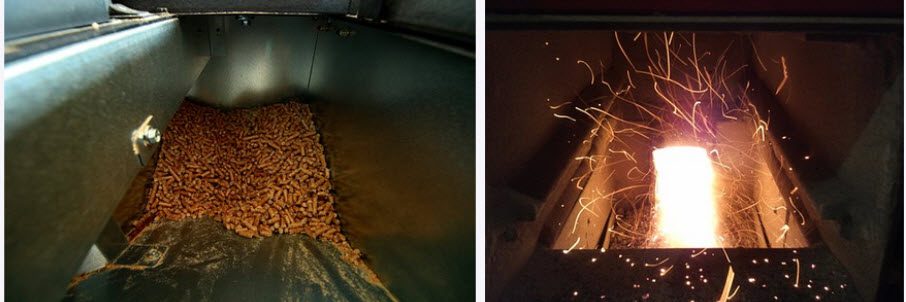Biodiesel is a type of diesel derived from long-chain fatty acid esters. Unlike petroleum-derived diesel, biodiesel does not come from organisms that lived for thousands of years ago – it comes from modern-day organisms, e.g. soybeans and corn. Waste oil from restaurants can be turned into biodiesel instead of going to waste.
The most common method for biodiesel production involves taking lipids (e.g. vegetable oil) and having them react chemically with an alcohol to produce a methyl, ethyl or propyl ester. This process is known as trans-esterfication.

Biodiesel for transportation
Biodiesel can be used in its pure form in certain car and truck engines, but it is more common to blend it with gasoline for use in common injection pump diesel engines.
Biodiesel has different solvent properties than petroleum-derived diesel, and can degrade natural rubber components (e.g. gaskets and hoses) in vehicles who have them. Natural rubber gaskets and hoses are unusual in vehicles manufactured after the early 1990s, and even in older vehicles, it is common for these parts to have been replaced with FKM components due to normal wear and tear over time. KFM components are not damaged by biodiesel.
The great solvent capacity of biodiesel can break down deposits of residue in fuel lines where petroleum-derived diesel has been used. While it is essentially good to get rid of this residue (higher efficiency), it is not good to chock the system by going from 100% petroleum-derived diesel to a fuel blend that contains a lot of biodiesel. With a chock transition, deposits can detach in clumps and clog the system. It is better to wear down the deposits gradually, by increasing the percentage of biodiesel in the fuel blend step-by-step. You can also elect to change the fuel filters on engines and heaters shortly after first switching to a biodiesel blend.
Railway trains
On 15 September 2007, the British Royal Train completed its first ever journey run on 100% biodiesel, and one of the passengers were Prince Charles. Since then, the Royal Train has operated successfully on 100% biodiesel.
Aircraft
When it comes to aircraft use, the United Airlines have been one of the pioneers, and on November 7, 2011, they flew the world´s first commercial aviation flight fuelled by 40% biodiesel fuel and 60% petroleum-derived jet fuel. The biodiesel was Solajet, which is a brand of algae-derived renewable jet fuel. The plane used was a Boeing 737-800, which flew from Houston to Chicago.
When it comes to flying aircraft fuelled on 100% biodiesel, several notable tests flights have been carried out in the the United States. On October 20, 2007, GeenFlight International flew an Aero L-29 Delfín (made in the Czech Republic) from the Reno-Stead Airport in Nevada – a flight powered by 100% biofuel derived from waste vegetable oil. In November the following year, the same aircraft made a longer journey, from Reno to Leesburg, Florida using 100% biofuel for the first seven of the legs. (The remaining legs were completed using a 50% biofuel – 50% JetA blend.)
Biodiesel for heating
Biodiesel can be used in both residential and commercial boilers. Typically, the biodiesel is blended with traditional fossil-derived heating oil instead of being used pure.
It should be noted that older furnaces may contain natural rubber parts that could be damaged by the biodiesel´s solvent properties. For furnaces without such parts, the solvent properties of the biodiesel are actually beneficial, since the furnace gets cleaned out which can improve efficiency.
Various blends
Biodiesel can be used as fuel in its pure form, but blending it with petroleum-derived diesel is much more common.
In retail, pure biodiesel (100%) is labelled B100.
20% biodiesel and 80% petrodiesel is labelled B20.
5% biodiesel and 95% petrodiesel is labelled B5.
2% biodiesel and 98% petrodiesel is labelled B2.
When the petrodiesel content is at least 80%, the fuel blend can be used in diesel equipment with no or only minor modifications and precautions. (But for legal reasons, always check the warranty before making a decision.)

